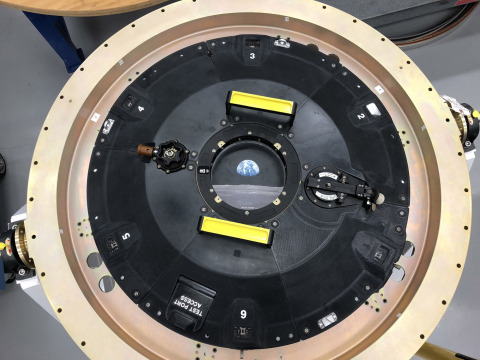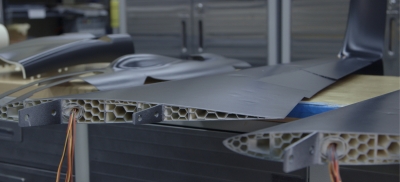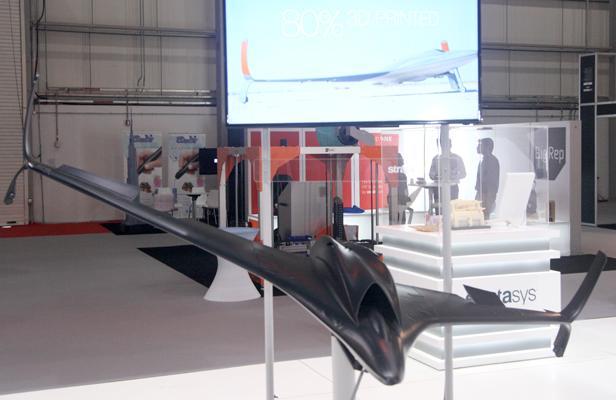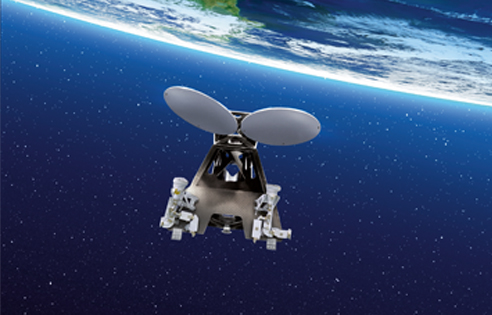Turkish Aerospace Industries Chooses Dassault Systèmes for Turkey’s Largest Aviation Project
Turkish Aerospace will use the 3DEXPERIENCE platform for end to end development of next generation, multirole aircraft
More than 2,000 stakeholders will digitally collaborate across functions and organizations
Dassault Systèmes selected after comprehensive evaluation of market solutions
Sidebar
Aerospace
Lifeguards of the near future
As the manufacturing partner for Sanad Academy, the winner of the AED1million 2017 UAE Drones for Good prize, Immensa Technology Labs was faced with the task of redesigning and 3D printing the body of an Unmanned Aerial Vehicle (UAV) within a very short period of time. The decision to produce the drone using additive manufacturing was made only three weeks prior to the competition, at a time when the team at Sanad Academy realized that 3D printing was the only way by which they could realize their ambitious goals. Their aim was to manufacture a ‘lifeguard drone’ – a drone which did not only fly, but could also float on water and act as a lifebuoy for people who may be drowning.

THE ARMOR 3D PRINTING OFFERING HAS A NAME: KIMYA
Armor has been producing 3D printing filaments for 3 years now. Boosted by its initial successes, today the group offers a 360° range named Kimya, consisting of both materials and services dedicated to additive manufacturing (3D printing).

MISSION TO THE MOON: STRATASYS JOINS FORCES WITH LOCKHEED MARTIN AND PADT TO ENGINEER ADVANCED 3D PRINTED PARTS FOR NASA’S ORION MISSION
Stratasys 3D printers and materials provide extremely high levels of strength, durability and thermal properties to power missions to deep space
Variant of new Stratasys Antero™ 800NA, PEKK-based material offers electro-static dissipative (ESD) functionality for advanced mechanical, chemical, and thermal properties

HYPERLOOP CONCEPT FROM THE DELFT UNIVERSITY OF TECHNOLOGY THINK TANK
3D PRINTER MANUFACTURER VOXELJET SUPPORTS HYPERLOOP PROJECT WITH 3D-PRINTED PMMA CASTING MOLDS FOR INVESTMENT CASTING OF ALUMINUM PARTS

ULA ATLAS V ROCKET LIFTS OFF WITH 3D PRINTED PARTS
Stratasys Ltd. (Nasdaq:SSYS) supported a United Launch Alliance (ULA) Atlas V rocket, launched yesterday from Cape Canaveral Air Force Station in Florida. The Atlas V rocket flew serial production 3D printed parts enabled by Stratasys support and technology. The 3D printed parts highlight the ability to replace metal components with 3D printed lightweight thermoplastic components.

DUBAI AIRSHOW SEES LAUNCH OF 3D PRINTED UAV
The Dubai Airshow has always been at the forefront of the aerospace industry, and the opening day of the 2015 edition was no different. The world's fastest, largest and most complex 3D-printed drone was unveiled at Dubai Airshow today, forming the centrepiece of the region's debut 3D Printshow.

Dubai Airshow: Drone manufactured using 3D printers
The jet-engine powered unmanned aerial vehicle took two months to create and has a speed of 200 miles per hour.

Metal Technology (MTI) Partners With NASA To 3D Print Rocket Engine Parts
Metal Technology, a custom manufacturing company specializing in reactive, refractory, and high temperature metals headquartered in Albany, Oregon, announced today that it is collaborating with NASA Johnson Space Center (JSC) to develop the next generation of rocket engines.
Few organizations are as busy integrating 3D direct metal printing into their engineering and design work as NASA. NASA currently has multiple business units working on projects as part of an effort to leverage best practices using digital manufacturing methods, including 3D metal printing.
Boeing Opens Advanced Manufacturing Research Center in South Carolina
- New 104,000-square-foot facility offers state-of-the-art labs and equipment
- Manufacturing research and development to focus on composite airplane fuselage and propulsion improvements

Aerospace: Airbus Defence and Space - Additive Manufacturing process by EOS optimizes Satellite Technology
Aerospace Company Airbus Defence and Space Uses Additive Manufacturing for the Production of Satellite Parts

 Deutsch (Germany)
Deutsch (Germany)  Polski (PL)
Polski (PL) 








